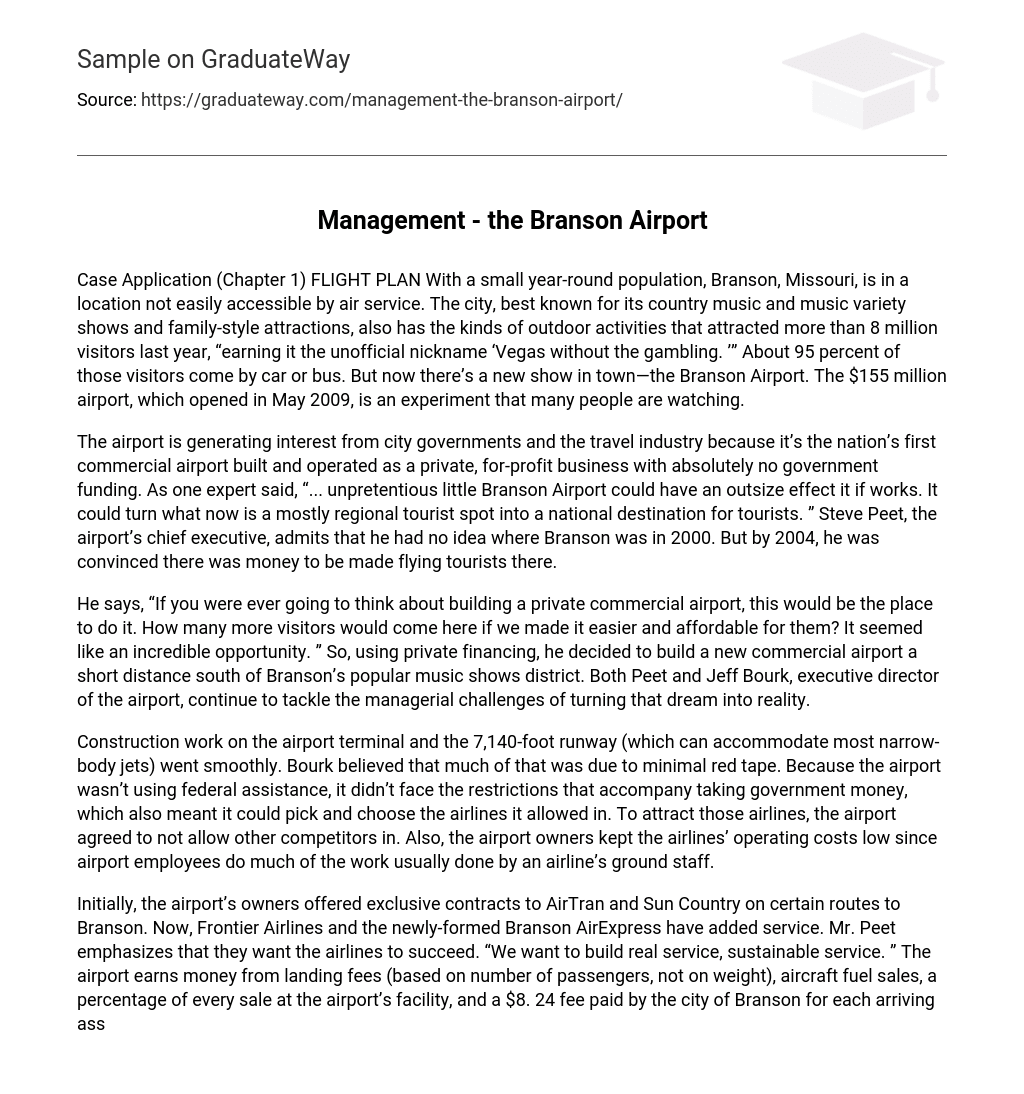The Branson, Missouri, airport is a recent addition to the city’s tourism industry. Situated in an area that lacks convenient air service access, Branson is famous for its country music and family-friendly entertainment options. Nonetheless, it also boasts outdoor activities which attracted more than 8 million tourists last year, leading to it being dubbed “Vegas without the gambling.” Most of these visitors arrive via cars or buses. The Branson Airport, established in May 2009 at a cost of $155 million, is an innovative project that has captured significant interest.
Branson Airport, the nation’s first commercial airport built and operated as a private, for-profit business without any government funding, has caught the attention of city governments and the travel industry. The airport’s unique model has garnered interest as it has the potential to transform Branson from a regional tourist spot into a popular national destination. Steve Peet, the airport’s chief executive, initially had no knowledge of Branson’s location in 2000. However, by 2004, he became convinced that there was a lucrative opportunity to fly tourists there.
According to him, this location would be perfect for constructing a private commercial airport. By making it more convenient and affordable, the number of visitors would greatly increase, presenting an incredible opportunity. Thus, he decided to develop a new commercial airport just south of Branson’s famous music shows district using private funding. Peet and Jeff Bourk, the airport’s executive director, are currently addressing the managerial challenges in bringing this dream to life.
Construction work on the airport terminal and the 7,140-foot runway was successful. The runway can accommodate most narrow-body jets. Bourk attributed this success to minimal red tape. Since the airport did not rely on federal assistance, it was not subject to the restrictions that come with government funding. This also gave it the freedom to select which airlines it wanted to allow. In order to attract those airlines, the airport made an agreement to exclude other competitors. Additionally, the airport owners kept operating costs for airlines low by having airport employees perform tasks typically done by an airline’s ground staff.
The airport initially offered exclusive contracts to AirTran and Sun Country for specific routes to Branson. However, Frontier Airlines and the newly-formed Branson AirExpress have now added their services. The main goal of the airport is to support these airlines in order to establish sustainable service. The airport generates revenue through landing fees, aircraft fuel sales, a percentage of all facility sales, and an $8.24 fee paid by the city of Branson for each arriving passenger.
In order to achieve their target of 250,000 passengers per year, the airport only needs 685 passengers (equivalent to five or six planeloads) per day. While confident in their strategy’s success, airport officials acknowledge there are obstacles that need addressing.
City officials have raised concerns about the legality of the contract between the city and the airport regarding the arriving passenger fee. Airport officials assert having a legal document supporting their position and expect payment accordingly.
Additionally, they argue that Branson benefits economically from every tourist passing through because they attract high-quality tourists from across the country who spend money in Branson at a low fee of $8.24.





